A Versatile Culinary Ingredient Introduction: Tomato paste is a thick, concentrated product made from ripe tomatoes that have been cooked down to remove excess water. Widely used in various culinary traditions around the world, tomato paste adds depth, richness, and a vibrant red color to a wide range of dishes. In this article, we delve into the origins, production process, nutritional benefits, and versatile applications of tomato paste. 1. Origins and Production Process: Tomato paste has a rich and interesting history that dates back centuries. Tomatoes are native to the Americas and were introduced to Europe by Spanish explorers in the 16th century. Initially, they were viewed with skepticism and were primarily grown for ornamental purposes. However, over time, tomatoes gained popularity as a culinary ingredient. The production of tomato paste involves several stages. First, ripe and plump tomatoes are selected, washed, and sorted. They are then crushed and strained to remove the seeds and skins. The resulting mixture is cooked down to reduce the water content, resulting in a thick and concentrated paste. Some manufacturers may add salt or other seasonings to enhance the flavor, though these additions can vary depending on regional preferences. 2. Nutritional Benefits: Tomato paste offers numerous nutritional benefits. It is packed with essential vitamins, minerals, and antioxidants. Notably, tomatoes are a rich source of lycopene, a powerful antioxidant that helps fight inflammation and reduce the risk of chronic diseases. Furthermore, tomato paste contains high levels of vitamins A and C, potassium, and folate. These nutrients support overall health, boost the immune system, and promote healthy vision. 3. Culinary Applications: Tomato paste forms the backbone of many savory dishes, adding depth and richness to recipes across diverse cuisines. a) Sauces and Stews: Tomato paste is a key ingredient in classic sauces like marinara, ragù, and Bolognese. Its concentrated flavor provides a robust base for slow-cooked stews, adding complexity to dishes like chili con carne and curries. b) Pizza and Pasta: Tomato paste serves as the foundation for pizza and pasta sauces. Whether it’s a classic Margherita pizza or a simple spaghetti marinara, tomato paste imparts the vibrant red color and tangy taste that we crave. c) Soups and Salsas: Tomato paste is frequently called upon to give soups and salsas a rich, tomatoey flavor. Whether it’s a hearty vegetable soup, gazpacho, or a tangy salsa for tacos, tomato paste elevates the taste profile. d) Condiments and Marinades: Tomato paste is a key ingredient in many condiments and marinades. It forms the basis for ketchup, barbecue sauce, and Worcestershire sauce, offering a sweet and tangy flavor profile.
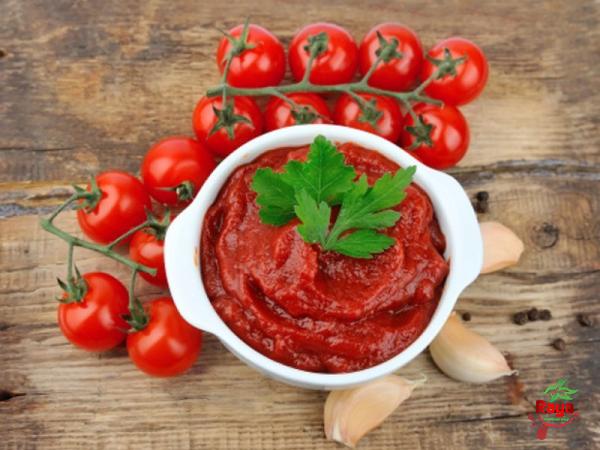
tomato paste
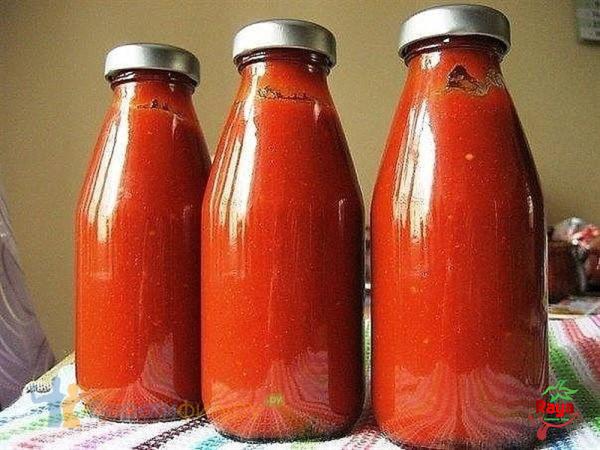 4. Shelf Life and Storage: Tomato paste has a long shelf life, making it a convenient pantry staple. Unopened cans or tubes of tomato paste can typically be stored for up to two years, while opened containers should be refrigerated and used within a week. To maximize the shelf life, some people prefer freezing tomato paste in ice cube trays, allowing them to defrost only the required amount for each recipe. This technique eliminates wastage and ensures the availability of tomato paste on demand. 5. Tomato Paste Varieties: While traditional tomato paste is made solely from tomatoes, various regional and specialty varieties are available, each offering unique flavors and culinary experiences. a) Double Concentrated Tomato Paste: This type undergoes an extended cooking process to reduce the water content further, resulting in a highly concentrated version. It offers a more intense flavor, making it ideal for small quantities and recipes that require a bold tomato taste. b) Sun-Dried Tomato Paste: Made from sun-dried tomatoes, this paste has a distinctive and robust flavor. It adds a deeply savory note to dishes, such as Mediterranean pasta sauces, pesto, and even spreads for grilled sandwiches. c) Flavored Tomato Pastes: Some manufacturers infuse tomato paste with additional ingredients like herbs, spices, or garlic, offering ready-made flavor enhancements for specific recipes or cuisines. 6. Health Considerations: Despite its versatility and nutritional benefits, individuals with certain health conditions may need to exercise caution when consuming tomato paste. a) Allergies: Tomato allergies are relatively rare but can occur in some individuals. Symptoms may range from mild skin irritations to severe allergic reactions. Individuals with known tomato allergies should avoid tomato paste and products containing tomatoes. b) Acid Content: Tomato paste is acidic, and excessive consumption can potentially worsen heartburn or acid reflux symptoms in individuals prone to these conditions. Modifying the recipe or portion sizes can help mitigate these issues. c) Sodium Content: Some tomato paste brands may contain added salt. Individuals on a sodium-restricted diet should review product labels carefully or opt for lower-sodium alternatives. Conclusion:
4. Shelf Life and Storage: Tomato paste has a long shelf life, making it a convenient pantry staple. Unopened cans or tubes of tomato paste can typically be stored for up to two years, while opened containers should be refrigerated and used within a week. To maximize the shelf life, some people prefer freezing tomato paste in ice cube trays, allowing them to defrost only the required amount for each recipe. This technique eliminates wastage and ensures the availability of tomato paste on demand. 5. Tomato Paste Varieties: While traditional tomato paste is made solely from tomatoes, various regional and specialty varieties are available, each offering unique flavors and culinary experiences. a) Double Concentrated Tomato Paste: This type undergoes an extended cooking process to reduce the water content further, resulting in a highly concentrated version. It offers a more intense flavor, making it ideal for small quantities and recipes that require a bold tomato taste. b) Sun-Dried Tomato Paste: Made from sun-dried tomatoes, this paste has a distinctive and robust flavor. It adds a deeply savory note to dishes, such as Mediterranean pasta sauces, pesto, and even spreads for grilled sandwiches. c) Flavored Tomato Pastes: Some manufacturers infuse tomato paste with additional ingredients like herbs, spices, or garlic, offering ready-made flavor enhancements for specific recipes or cuisines. 6. Health Considerations: Despite its versatility and nutritional benefits, individuals with certain health conditions may need to exercise caution when consuming tomato paste. a) Allergies: Tomato allergies are relatively rare but can occur in some individuals. Symptoms may range from mild skin irritations to severe allergic reactions. Individuals with known tomato allergies should avoid tomato paste and products containing tomatoes. b) Acid Content: Tomato paste is acidic, and excessive consumption can potentially worsen heartburn or acid reflux symptoms in individuals prone to these conditions. Modifying the recipe or portion sizes can help mitigate these issues. c) Sodium Content: Some tomato paste brands may contain added salt. Individuals on a sodium-restricted diet should review product labels carefully or opt for lower-sodium alternatives. Conclusion:
Specifications of tomato paste
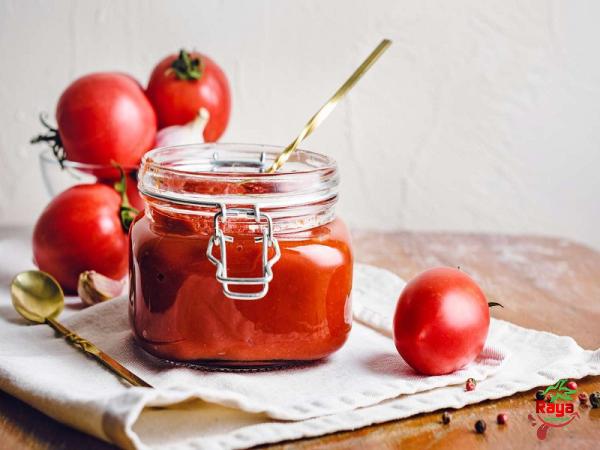 Conclusion: Tomato paste is a versatile and essential ingredient in the culinary world. Whether it’s an Italian pasta sauce, a hearty stew, or a tangy salsa, tomato paste provides depth, richness, and a vibrant red color to a wide variety of dishes. With its rich nutritional profile and numerous benefits, tomato paste is a great addition to any pantry, offering both flavor and health benefits in equal measure.I. Market Overview: The tomato paste market has witnessed significant growth in recent years, driven by the increasing demand for convenient and ready-to-use ingredients. Factors such as changing consumer lifestyles, a surge in the popularity of international cuisines, and the rise in foodservice establishments worldwide have contributed to the expanding market for tomato paste. II. Global Production and Consumption: Tomato paste is produced and consumed on a global scale. Major producers include countries like China, the United States, Italy, Spain, and Turkey. These nations benefit from favorable climates for tomato cultivation, efficient farming practices, and advanced processing technologies. The global consumption of tomato paste is primarily driven by the food processing industry, which utilizes it as a key ingredient in the production of sauces, soups, and other processed food products. III. Market Segmentation: The tomato paste market can be segmented based on packaging type, distribution channel, and application. a) Packaging Type: – Canned Tomato Paste: Canned tomato paste is the most common packaging type, offering convenience, long shelf life, and easy storage. – Tubes and Sachets: Tomato paste is also available in tubes and sachets, providing single-use portions and reducing wastage. b) Distribution Channel: – Supermarkets and Hypermarkets: These retail channels account for a significant share of tomato paste sales, catering to both individual consumers and bulk buyers such as food processors and restaurants. – Online Retail: The growing e-commerce industry has witnessed an increasing demand for tomato paste due to convenience, wider product selection, and doorstep delivery convenience. c) Application: – Food Processing: The food processing industry, including sauces, soups, and canned food manufacturers, represents a major application segment for tomato paste. – HoReCa (Hotel/Restaurant/Café): The hotel, restaurant, and café sector is a significant consumer of tomato paste, using it in various recipes and culinary preparations. – Household Consumption: Tomato paste is a staple ingredient in many households, used for homemade sauces, stews, and other culinary creations.
Conclusion: Tomato paste is a versatile and essential ingredient in the culinary world. Whether it’s an Italian pasta sauce, a hearty stew, or a tangy salsa, tomato paste provides depth, richness, and a vibrant red color to a wide variety of dishes. With its rich nutritional profile and numerous benefits, tomato paste is a great addition to any pantry, offering both flavor and health benefits in equal measure.I. Market Overview: The tomato paste market has witnessed significant growth in recent years, driven by the increasing demand for convenient and ready-to-use ingredients. Factors such as changing consumer lifestyles, a surge in the popularity of international cuisines, and the rise in foodservice establishments worldwide have contributed to the expanding market for tomato paste. II. Global Production and Consumption: Tomato paste is produced and consumed on a global scale. Major producers include countries like China, the United States, Italy, Spain, and Turkey. These nations benefit from favorable climates for tomato cultivation, efficient farming practices, and advanced processing technologies. The global consumption of tomato paste is primarily driven by the food processing industry, which utilizes it as a key ingredient in the production of sauces, soups, and other processed food products. III. Market Segmentation: The tomato paste market can be segmented based on packaging type, distribution channel, and application. a) Packaging Type: – Canned Tomato Paste: Canned tomato paste is the most common packaging type, offering convenience, long shelf life, and easy storage. – Tubes and Sachets: Tomato paste is also available in tubes and sachets, providing single-use portions and reducing wastage. b) Distribution Channel: – Supermarkets and Hypermarkets: These retail channels account for a significant share of tomato paste sales, catering to both individual consumers and bulk buyers such as food processors and restaurants. – Online Retail: The growing e-commerce industry has witnessed an increasing demand for tomato paste due to convenience, wider product selection, and doorstep delivery convenience. c) Application: – Food Processing: The food processing industry, including sauces, soups, and canned food manufacturers, represents a major application segment for tomato paste. – HoReCa (Hotel/Restaurant/Café): The hotel, restaurant, and café sector is a significant consumer of tomato paste, using it in various recipes and culinary preparations. – Household Consumption: Tomato paste is a staple ingredient in many households, used for homemade sauces, stews, and other culinary creations.
buy tomato paste
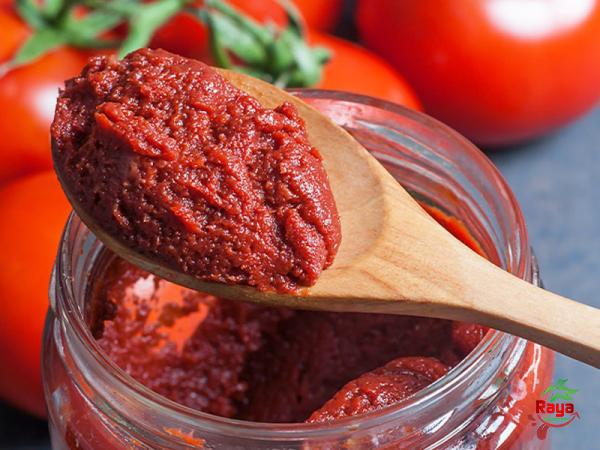 IV. Key Market Trends: a) Organic Tomato Paste: With the rise in health-conscious consumers and the growing demand for organic food products, the market for organic tomato paste is gaining traction. Manufacturers are focusing on sourcing organic tomatoes and using organic farming methods to cater to this niche segment. b) Clean Label and Natural Ingredients: Consumers are increasingly seeking products with clean labels, devoid of artificial additives, preservatives, or unnecessary fillers. Tomato paste manufacturers are addressing this demand by offering products made with natural ingredients and minimal processing. c) Product Innovation: Tomato paste manufacturers are focusing on product differentiation through innovation. This includes the introduction of flavored tomato pastes, such as smoked tomato paste or chili-infused tomato paste, catering to consumers’ evolving taste preferences. V. Competitive Landscape: The tomato paste market is highly competitive, with numerous regional and international players vying for market share. Key players in the global market include ConAgra Brands Inc., The Kraft Heinz Company, Del Monte Foods Inc., Capilano Honey Ltd, Cento Fine Foods, and Mutti S.p.A. These companies employ strategies such as mergers and acquisitions, new product launches, and collaborations to gain a competitive edge and expand their market presence. VI. Opportunities and Challenges: a) Opportunities: – Growing Food Service Industry: The expanding global foodservice industry, coupled with the rising trend of eating out and ordering in, presents significant growth opportunities for tomato paste manufacturers. – Emerging Markets: Developing nations with improving disposable incomes and changing consumer preferences are emerging as lucrative markets for tomato paste, offering manufacturers ample growth potential. b) Challenges: – Price Fluctuations: Tomatoes, the primary raw material for tomato paste, are subject to price fluctuations due to various factors such as weather conditions, pests, and diseases. These fluctuations can impact the profitability of tomato paste manufacturers. – Supply Chain Management: The tomato paste manufacturing process requires efficient supply chain management to ensure the availability of high-quality tomatoes, timely processing, and timely delivery to customers. Challenges in logistics and transportation can disrupt the supply chain. VII. Regulatory Landscape: Tomato paste production and distribution are subject to various regulations and quality standards set by government authorities and food regulatory bodies. These regulations ensure food safety, product labeling, and quality control. Tomato paste manufacturers need to comply with these regulations to ensure consumer trust and maintain market access. VIII. Future Outlook: The tomato paste market is expected to witness steady growth in the coming years. Factors such as the increasing demand for convenience foods, the rising popularity of international cuisines, and the growing awareness of the health benefits of tomato-based products are key drivers of market growth. Innovations in packaging, flavor variations, and product formulations, along with expanding distribution channels, are likely to fuel further market expansion. Conclusion: Tomato paste is a versatile culinary ingredient with a growing market demand worldwide. Its rich flavor, vibrant color, and extensive applications make it a staple in various cuisines. With evolving consumer preferences, the tomato paste market is witnessing product innovations, including organic and clean label options. While challenges exist, such as price fluctuations and supply chain management, the market presents numerous opportunities for growth, particularly in the foodservice industry and emerging markets. As the market continues to evolve, tomato paste manufacturers must adapt to changing consumer demands and regulatory requirements to stay competitive and capitalize on the growth potential.
IV. Key Market Trends: a) Organic Tomato Paste: With the rise in health-conscious consumers and the growing demand for organic food products, the market for organic tomato paste is gaining traction. Manufacturers are focusing on sourcing organic tomatoes and using organic farming methods to cater to this niche segment. b) Clean Label and Natural Ingredients: Consumers are increasingly seeking products with clean labels, devoid of artificial additives, preservatives, or unnecessary fillers. Tomato paste manufacturers are addressing this demand by offering products made with natural ingredients and minimal processing. c) Product Innovation: Tomato paste manufacturers are focusing on product differentiation through innovation. This includes the introduction of flavored tomato pastes, such as smoked tomato paste or chili-infused tomato paste, catering to consumers’ evolving taste preferences. V. Competitive Landscape: The tomato paste market is highly competitive, with numerous regional and international players vying for market share. Key players in the global market include ConAgra Brands Inc., The Kraft Heinz Company, Del Monte Foods Inc., Capilano Honey Ltd, Cento Fine Foods, and Mutti S.p.A. These companies employ strategies such as mergers and acquisitions, new product launches, and collaborations to gain a competitive edge and expand their market presence. VI. Opportunities and Challenges: a) Opportunities: – Growing Food Service Industry: The expanding global foodservice industry, coupled with the rising trend of eating out and ordering in, presents significant growth opportunities for tomato paste manufacturers. – Emerging Markets: Developing nations with improving disposable incomes and changing consumer preferences are emerging as lucrative markets for tomato paste, offering manufacturers ample growth potential. b) Challenges: – Price Fluctuations: Tomatoes, the primary raw material for tomato paste, are subject to price fluctuations due to various factors such as weather conditions, pests, and diseases. These fluctuations can impact the profitability of tomato paste manufacturers. – Supply Chain Management: The tomato paste manufacturing process requires efficient supply chain management to ensure the availability of high-quality tomatoes, timely processing, and timely delivery to customers. Challenges in logistics and transportation can disrupt the supply chain. VII. Regulatory Landscape: Tomato paste production and distribution are subject to various regulations and quality standards set by government authorities and food regulatory bodies. These regulations ensure food safety, product labeling, and quality control. Tomato paste manufacturers need to comply with these regulations to ensure consumer trust and maintain market access. VIII. Future Outlook: The tomato paste market is expected to witness steady growth in the coming years. Factors such as the increasing demand for convenience foods, the rising popularity of international cuisines, and the growing awareness of the health benefits of tomato-based products are key drivers of market growth. Innovations in packaging, flavor variations, and product formulations, along with expanding distribution channels, are likely to fuel further market expansion. Conclusion: Tomato paste is a versatile culinary ingredient with a growing market demand worldwide. Its rich flavor, vibrant color, and extensive applications make it a staple in various cuisines. With evolving consumer preferences, the tomato paste market is witnessing product innovations, including organic and clean label options. While challenges exist, such as price fluctuations and supply chain management, the market presents numerous opportunities for growth, particularly in the foodservice industry and emerging markets. As the market continues to evolve, tomato paste manufacturers must adapt to changing consumer demands and regulatory requirements to stay competitive and capitalize on the growth potential.


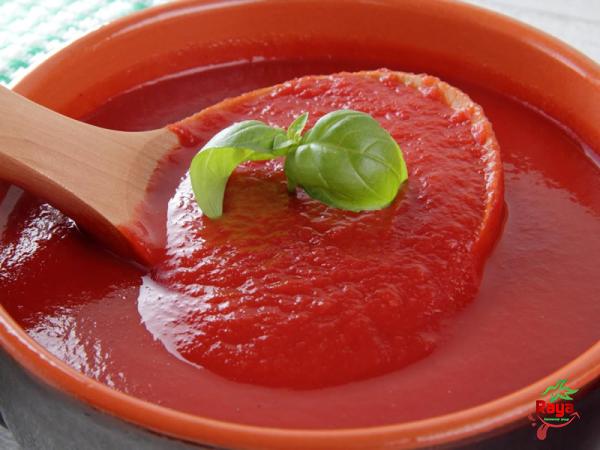
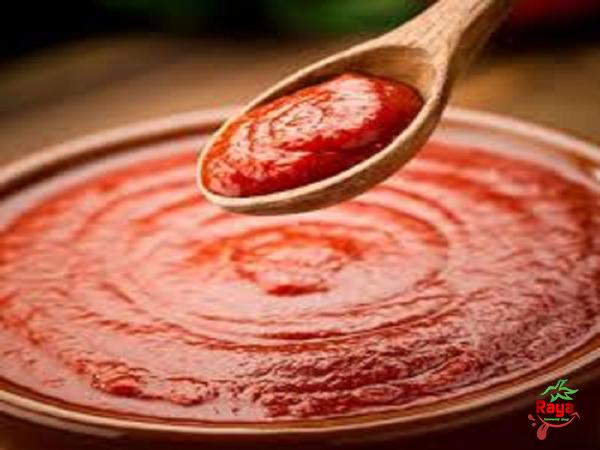

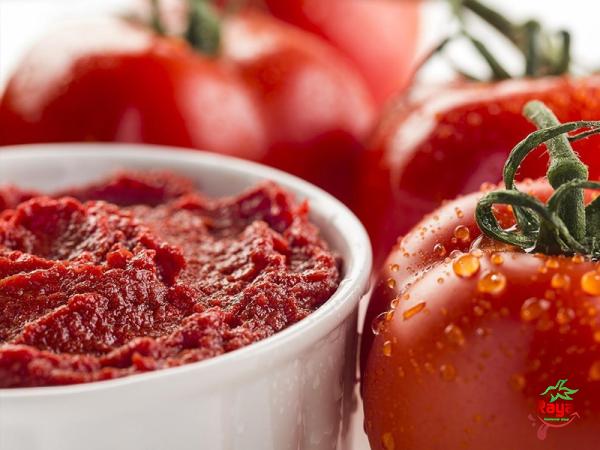
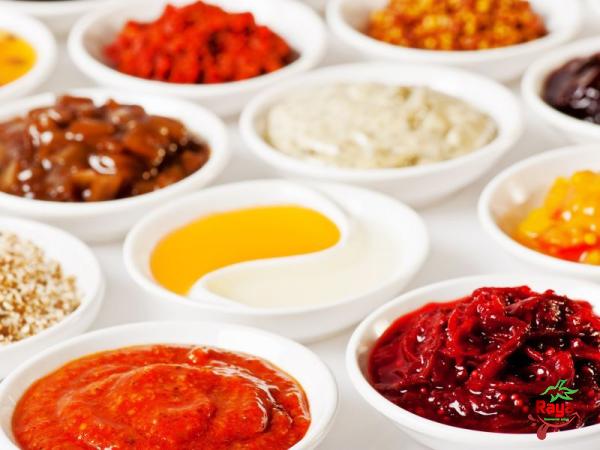

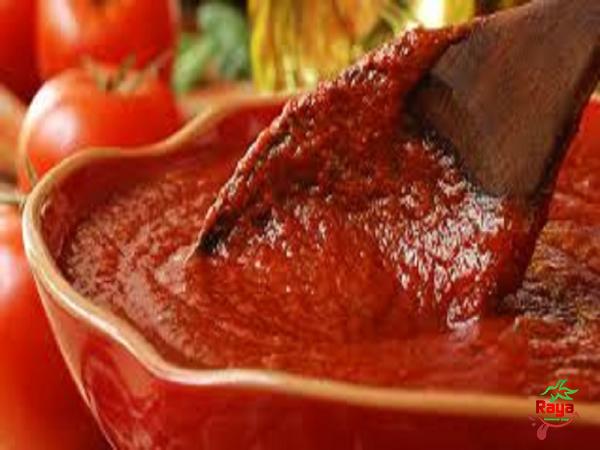
Your comment submitted.